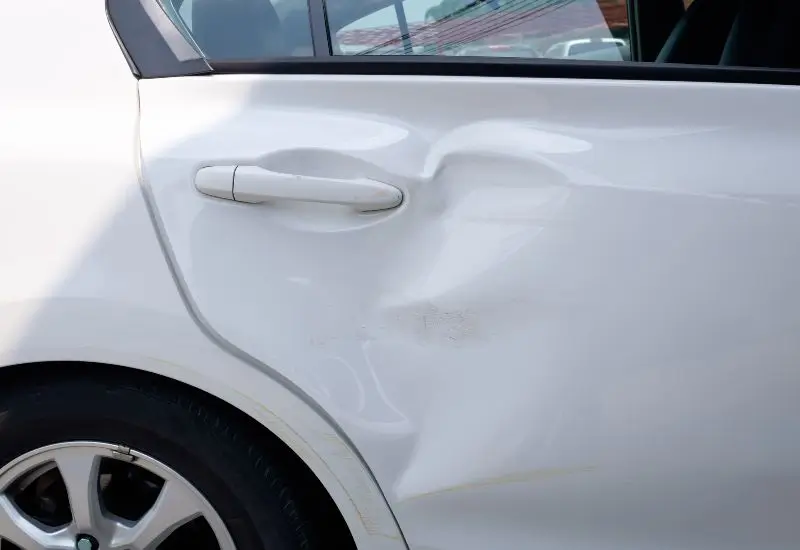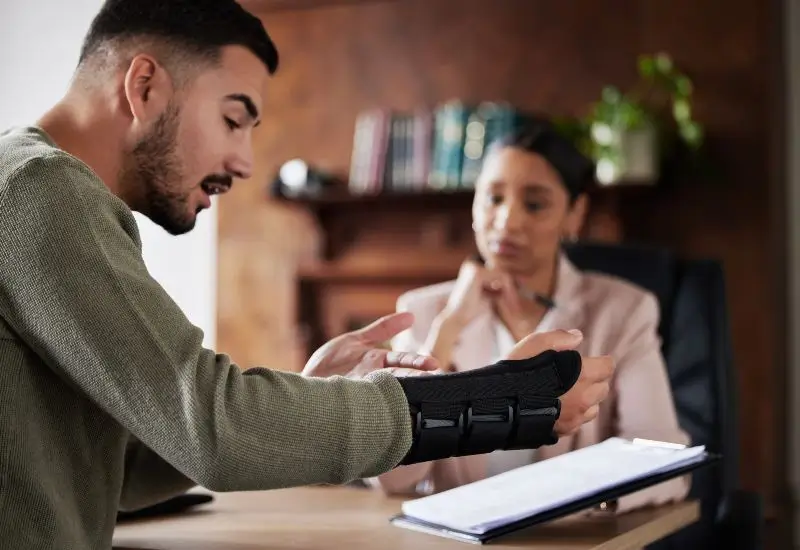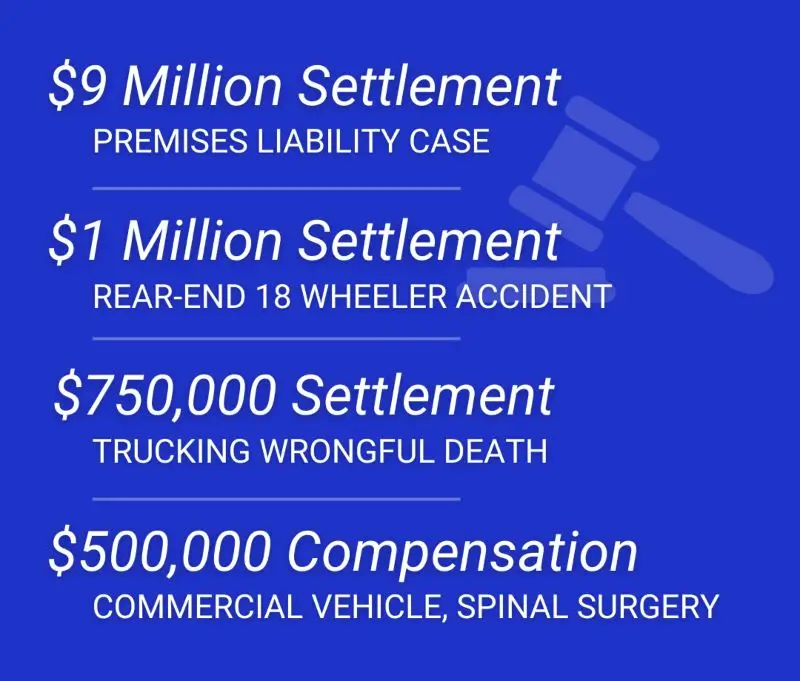Who’s at Fault? Understanding T-Bone Collisions in Texas
Even the most minor auto accidents are scary. They lead to significant property damage, not to mention the medical costs associated with treating broken bones and lacerations. T-bone collisions are among the most dangerous types of auto accidents. These incidents come with a high risk of severe injury, and oftentimes, they come out of nowhere. If you or a loved one have been involved in a T-bone accident, Nava Law Group, P.C. can offer the legal support you need. As seasoned traffic accident lawyers in Houston, TX, we can walk you through the process of building a case and earning compensation for your injuries. Here’s what you need to know about T-bone collisions and the legal system.

What Is a T-Bone Collision?
T-bone collisions occur when the front of one vehicle strikes the side of another, forming a “T” shape. Learn more about the most common causes of T-bone accidents:
- Running Red Lights—Barreling through a red light is usually the reason for a T-bone auto accident. Use added caution when the light turns yellow and prepare to stop instead of rushing through the intersection.
- Failure to Yield—Drivers who ignore traffic signs and fail to yield are more likely to cause a T-bone collision. Always follow the right-of-way guidelines.
- Distracted Driving—Texting, eating, and other distractions can divert attention away from the road and lead to crashes with other motorists.
T-Bone Accidents Can Cause Severe Injury
All kinds of car collisions can lead to injuries, but T-bone auto accidents are especially dangerous. Most vehicles have limited protection on the sides, further increasing the chances of a severe injury. If you’ve sustained any of the following injuries in a T-bone collision, you may have a legal case for compensation:
- Whiplash
- Head injuries
- Broken bones
- Cuts and lacerations
Establishing Fault in Your T-Bone Accident Case
If you’ve recently been in an auto accident, you may be eligible for compensation for medical bills and lost wages. However, before you can win compensation, you have to prove fault. Let’s take a deeper look at the legal meaning of “fault” and how to establish it:
What Is Fault?
Fault determines whose negligence or wrongful actions caused the accident. Establishing fault is crucial because it determines who is liable for damages and compensation. In T-bone collisions, the fault is typically assigned to the party that violated traffic laws or acted negligently, such as a driver running a red light or failing to yield the right of way.
Determining Fault in Texas
Establishing fault is a key part of the legal process, but it isn’t always as straightforward as it seems. Fault can be complex, especially in Texas, where comparative negligence laws apply. The first step to determining fault is gathering enough evidence. Evidence might include witness statements, traffic camera footage, and police reports. From there, our legal professionals can help you file a claim. We’ll be at your side throughout the process to answer questions and address your concerns.
The Role of Traffic Laws
Traffic laws play a significant role in determining fault. For instance, if a driver runs a red light, they are usually at fault for the collision. However, traffic guidelines can differ from intersection to intersection. For example, some stoplights have a “no right on red” rule. Understanding the laws that apply to your case is essential while gathering evidence and finding witnesses to testify.
When Comparative Negligence Applies
Texas follows the rule of comparative negligence, which means each party’s fault is calculated as a percentage. If you are found to be less than 51% at fault for a traffic accident, you can still recover damages, but they will be reduced by your percentage of fault.
Comparative negligence comes into play when responsibility for a collision is not entirely clear-cut, and multiple parties may share the blame. This legal principle is especially relevant in accidents that occur at busy intersections, where both drivers could potentially violate traffic rules. For instance, if one driver runs a red light while another is speeding, both actions might contribute to the cause of the accident. In such cases, comparative negligence allows for a more nuanced determination of liability rather than placing full blame on a single party.
Common Scenarios and Who’s at Fault
Every situation is different, and an array of different factors affect who is deemed responsible for a T-bone auto accident. Here is a general guide to who is typically at fault in common types of collisions:
- Intersection Accidents—The driver who ran a red light or failed to yield to oncoming traffic is usually at fault. However, if both drivers claim they had the green light, witness statements and traffic camera footage become crucial.
- Parking Lot Collisions— Parking lots are notorious for tricky situations. If both drivers were reversing, the fault might be shared. However, if one driver was stationary and the other was moving, the moving driver is typically at fault.
- Highway On-Ramps—Merging onto highways can be risky. If a T-bone collision occurs on an on-ramp, the merging driver is often at fault for not yielding to highway traffic. But if the highway driver was speeding, liability could be shared.
Importance of a Personal Injury Lawyer
Dealing with the aftermath of a traffic accident is overwhelming. Not only do you need to fix damage to your vehicle and communicate with insurance, but you may also be recovering from serious injuries. Look to Nava Law Group, P.C. during this difficult time. Our personal injury lawyers can guide you through the legal system with ease. Here’s why hiring an auto accident attorney is so important:
- A Complex Legal System—If you don’t hold a law degree, navigating the legal system feels nearly impossible. Thankfully, our team is here to explain your next steps after a T-bone collision. We’ll ensure you understand the process every step of the way.
- Comprehensive Expertise—At Nava Law Group, P.C., we have decades of expertise in personal injury law. We follow changing laws closely and will help you build a strong case.
- Help With Negotiation—Negotiating is one of the hardest parts of getting compensation after an auto accident. Our team will meet with the other party’s lawyers on your behalf and advocate for your rights.
- Representation in Court—Sometimes, going to court is your best bet for getting the compensation you deserve. We’re ready to litigate should the need arise.

Choosing the Right Attorney
You know you need an attorney after a T-bone accident, but how do you choose the right one? You should consider several factors as you investigate your options. After all, the right lawyer can make all the difference. Account for the following as you research local law firms:
- Expertise—Always choose a lawyer with significant experience in personal injury law. If possible, opt for one with lots of expertise in different types of motor vehicle accidents.
- Consultation Process—Most attorneys offer a free initial consultation. Use this opportunity to discuss your case, understand your options, and determine the attorney’s suitability.
- Legal Fees—Legal fees can vary, but many personal injury attorneys work on a contingency basis. This means they only get paid if you win your case, making legal assistance more accessible. Make sure you understand the lawyer’s fee structure before hiring them.
Tips for Avoiding T-Bone Auto Accidents
Preventing T-bone collisions is always better than dealing with their aftermath. While not every situation can be avoided, here are some tips for safe driving:
- Use Defensive Driving Techniques—Being a defensive driver can significantly reduce your risk of getting into an accident. Defensive drivers maintain a safe following distance, obey speed limits, and yield the right-of-way when necessary. By being proactive rather than reactive, you can navigate unexpected situations more confidently.
- Follow Traffic Signals—It may seem obvious, but following traffic signals is crucial. Red light runners are a leading cause of T-bone collisions, so always stop when required. If the light turns yellow, prepare to stop instead of gunning it through the intersection.
- Avoid Distractions—Distracted driving is a major contributor to accidents. Keep your focus on the road and avoid texting, eating, or fiddling with the radio.
Help for Other Types of Motor Vehicle Accidents
Perhaps you’ve been in a motor vehicle accident, but you weren’t T-boned. Not to worry—Nava Law Group, P.C. specializes in a range of personal injury cases. Beyond conventional auto accidents, we can also provide counsel for the following:
- Pedestrian Accidents—Using a crosswalk shouldn’t be dangerous, but too often, it is. If you’ve been involved in a pedestrian accident, we’ll fight to get you compensated for your injuries.
- Bicycle Accidents— Whether you’re a novice or seasoned cyclist, accidents happen on roadways. Our team will look at the details of your bicycle accident and craft a feasible case.
- Boat Accidents—Boat accidents are often much more complicated than car collisions. We’ll help you navigate maritime laws and other considerations in your case.
- Truck Accidents—Accidents involving large trucks often lead to severe injuries. If you’ve been hurt because of another person’s negligence, talk to our lawyers about building a case.
- Bus Accidents—Public transportation is typically very safe, but bus accidents do occur occasionally. Victims of these collisions can look to us for legal support.
- Motorcycle Accidents—Unfortunately, most motorists aren’t on the lookout for motorcycles. These dangerous collisions lead to serious injuries all too often. Seek representation from Nava Law Group, P.C. after one of these terrifying accidents.
Frequently Asked Questions About T-Bone Collisions
Every situation is different, and it makes sense if you still have questions about T-bone collisions. Nava Law Group, P.C. is here to put your concerns to rest and help you build a solid case for compensation. Take a look at our frequently asked questions about T-bone accidents to learn more:
What types of compensation can I receive from a T-bone collision?
You may be eligible for compensation covering medical expenses, lost wages, pain and suffering, vehicle repair or replacement, and other out-of-pocket costs. The exact compensation depends on the accident’s specifics and who’s at fault.
How long do I have to file a lawsuit after a T-bone collision in Texas?
In Texas, the statute of limitations for personal injury claims is generally two years from the date of the accident. Be sure to consult with an auto accident attorney to confirm deadlines specific to your case.
What if the other driver’s insurance company contacts me?
Be cautious about what you say if the other driver’s insurance company contacts you. Insurance adjusters may attempt to minimize payouts by getting you to admit fault or downplay your injuries. It is often best to consult with a traffic accident lawyer before providing any statements, and let your legal representative handle communications with insurance companies on your behalf.
How can I ensure I’m fully compensated for vehicle damage?
Getting appropriate compensation is often an uphill battle. Gather detailed repair estimates from reputable auto shops and provide these reports to your insurance provider. Include photos of the damage and receipts for previous vehicle maintenance to substantiate your claim. If the insurer’s offer seems insufficient, you can negotiate for a fair settlement or seek legal advice from Nava Law Group, P.C.
Consult With Nava Law Group, P.C. Today
No matter the extent of your injuries after a T-bone accident, you may be eligible for compensation. The team at Houston’s Nava Law Group, P.C. can help establish fault and make a case for compensation on your behalf. By following our tips, you can better prepare yourself to handle such situations. And remember, legal assistance is invaluable in navigating the complexities of fault and liability. Contact us today for details about advocating for your rights after an auto accident.








